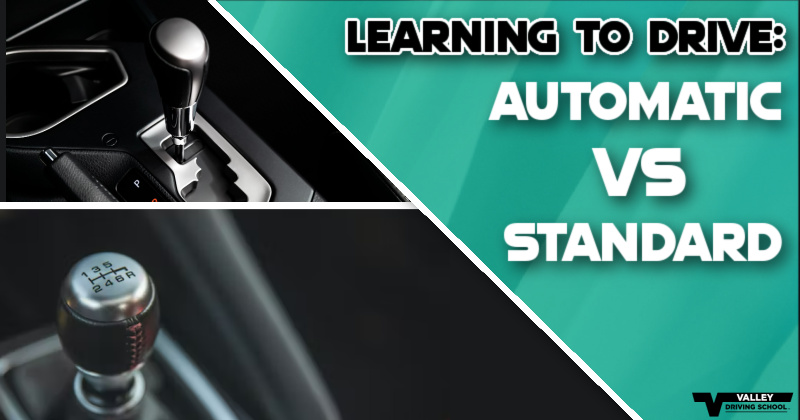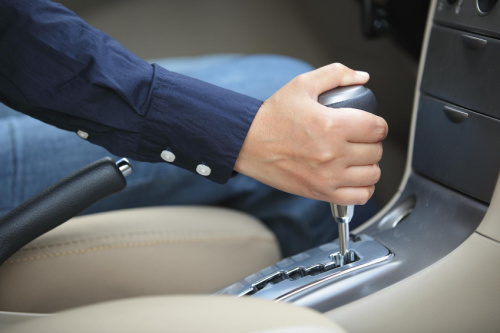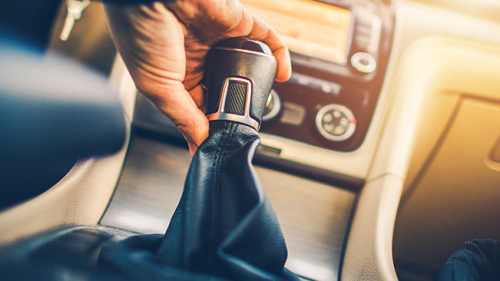When you’re learning to drive you’ll inevitably hear a lot of talk about what the most important aspect of your first car is. Some say the stereo system, others say the fuel efficiency or safety ratings, others may even say the engine itself - but everyone is quick to dismiss one of the most integral systems of all vehicles: the transmission.

The stereo and engine may sound great, it may be fuel efficient and have all the safety features you could ask for - but if the transmission is a bust, you’ll be left sitting still. Learning to drive is heavily dependent on which type of transmission you have access to, and how well you can adapt to changing road conditions. In this post, we’ll outline the pros and cons associated with learning to drive with a manual or automatic transmission.
HOW DO TRANSMISSIONS WORK?
There are two main models of transmission that are, in short, the mechanical systems that allow the vehicle to move: automatic and manual. The transmission allows the vehicle to change gears through a varying gear ratio. At lower speeds, power is typically increased, and in higher gears speed is increased while brute power is reduced.
An automatic transmission shifts gears for you, eliminating the clutch pedal and simply allows you to select a drive mode and press the gas and brake. Automatic transmissions are much more intricate and complex systems than their manual counterparts, and weigh a considerable amount more - but their simplicity and user-friendly approach make them the most popular type of transmission of the day.
Manual transmissions are, mechanically, much simpler systems that require fewer parts and less maintenance over time, but require that the driver manually shifts through the gears using a shifter and a clutch pedal. They require that the driver be able to balance the throttle with the clutch that separates the engine’s power from the transmission itself.
Learning To Drive With An Automatic Transmission
 Auto transmissions are the top choice for most auto-makers and buyers - but that doesn’t mean they’re the best option for everyone. A few things to consider when you’re learning to drive:
Auto transmissions are the top choice for most auto-makers and buyers - but that doesn’t mean they’re the best option for everyone. A few things to consider when you’re learning to drive:
They’re Easier to Use
Without a doubt, automatic cars are much easier to learn in. They offer a very simple and straight-forward way to get comfortable behind the wheel, and because of this, win most people over who are just learning. Their simplicity inspires confidence, and predictability, two big benefits when taking to the road for the first time.
Many driving instructors and schools teach keeping both hands on the wheel as a primary rule of safety and attentiveness for early drivers, and an automatic transmission allows new drivers to do just that - there’s no need to take your hands off the wheel to shift gears while driving.
Reliability
What we mean by reliability is the consistent rate of success, and therefore reliability, that new drivers will experience when driving an automatic transmission. There is much less of a chance that the engine will stall out, which can happen if the optimal balance between the clutch pedal and throttle isn’t kept. Further, this makes automatic transmission vehicles easier to operate in heavy traffic situations and on hills where manoeuvres like starting and stopping are more likely to occur in large numbers.
Manual
Less Expensive
Automatic transmissions are complicated pieces of machinery, while manual gearboxes are quite simple by comparison. The fewer moving parts in a manual transmission help to make it much cheaper to maintain and repair than its auto cousin.
This is, of course, independent on the clutch itself - the clutch requires a balanced touch and a driver that understands its limitations and when not to push them. A clutch repair can be costly when you’re just learning to drive a manual vehicle, and this can sometimes rub new drivers the wrong way. But, when you get the hang of it, a clutch replacement won’t need to be at the forefront of your mind.
Manual vehicles tend to be slightly more fuel efficient as well, because the driver can select the gear and maintain a steady RPM count without having the engine and transmission change gears on you without notice. Some studies report that a manual transmission can save a driver as much as 15% on fuel costs.
Better Control
One of the biggest benefits of operating a manual transmission is the lessons it can teach you. A driver that learns to drive with a manual transmission will inevitably learn to read what the car needs in terms of driver input. For example, a long steep road will dictate that a downshift is in order; the engine will slowly lose power in its higher gear and an auto transmission will downshift for you.
A manual transmission means that the driver will have to learn when to downshift, in turn learning about the car, and its inner-workings. In short, a manual transmission offers a driver more granular control over the situation. However, it is important to note that it can be more prone to failure if you are new to driving as miss-timed shifts may result in damaging your manual transmission over time.
Recommendations?
Both automatic and manual transmissions have their own pros and cons. Each different type of transmission requires different actions and thought processes from their drivers. Some driving schools may teach you how to operate both types, but we would most likely recommend that someone learning to drive consider beginning with an automatic transmission for its ability to inspire confidence and consistency in new drivers, while focusing on the skills required to drive safe.
